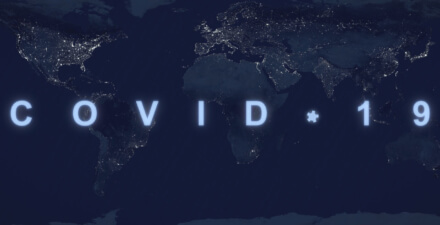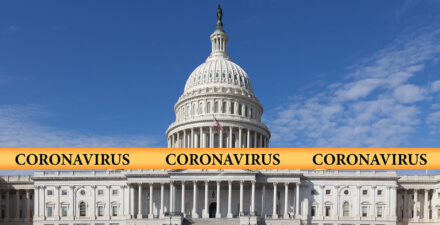Brad DeLong: Worthy reads on equitable growth, April 19–25, 2020
Worthy reads from Equitable Growth:
- This is, I think, not a call for a Works Progress Administration as such, but rather a call for a very large-scale Public Health Tracking Administration. Read Heather Boushey, “A Modern-Day Works Progress Administration Could Prevent a Coronavirus Depression in the United States,” in which she writes: “To be effective in containing the virus in the United States, track and trace must be implemented in a coordinated way and done so across the nation. Experts at the Center for Health Security at Johns Hopkins University’s Bloomberg School of Public Health estimate that just to start an effective national track and trace system will require hiring 100,000 individuals alongside more investment in the state and local public health workforce. Depending on how the pandemic plays out over the course of 2020 and into 2021, public health officials easily could discover they need even more people power to track and trace. Robert Redfield, the director of the Centers for Disease Control and Prevention, says a significant increase in public health officials engaged in track and trace will be necessary if the coronavirus returns in force this coming winter. And former CDC Director Tom Frieden believes hundreds of thousands of new trackers and tracers are needed to do the job now. Where can the federal government find such an army of workers? The answer is among the tens of millions of workers idled amid the current recession.”
- This is a major institutional design failure. If I were designing this, then small businesses (and large businesses, too) would have had a right to take out loans to the amount of two years’ past receipts, and the Federal Reserve would have promptly discounted such loans at par. To find out what actually happened, read Amanda Fischer, “Early Lessons Learned from the U.S. Small Business Administration’s First Round of Lending from Its Payroll Protection Program,” in which she writes: “Policymakers have wide latitude to shape how our economy looks coming out of the economic downturn and into the recovery. This second round of funding by the Small Business Administration through the Payroll Protection Program is an important next step, and hopefully businesses in the hardest-hit sectors, in previously neglected states, and among those smallest of small businesses seeking small-value loans will be assisted. Banking industry insiders are predicting that the next round of small business funding could evaporate in just two days. Congress should consider massively scaling these investments, ideally making the funds guaranteed for all eligible small businesses … Beyond the too-small funding amount, the biggest disappointment of the small business loan program so far is the lack of data collection on applications received and loans funded. Without a view into this, policymakers, law enforcement, advocates, and researchers will find it hard to determine patterns of who did and who did not receive rescue money. Finally, even as Congress works remotely, oversight will be essential.”
- Supply chains as cost-minimizers appears to have been a trend of the past. Or, at least, it ought to have been a trend of the past. The very sharp Case Western University professor Susan Helper, who has been writing about supply chains recently for Equitable Growth, is, I think, correct here: the future will be how firms can use value chains to mobilize productive resources. Read her “How COVID-19 Makes the Case for ‘High-Road’ Supply Chains,” in which she writes: “Supply chains have been fragile for some time, dating back to before the COVID-19 outbreak. Within the last two decades, there have been major disruptions caused by the Fukushima Daiichi tsunami in Japan in 2011, the floods in Thailand that same year, and the SARS epidemic in China and Hong Kong from 2002 into 2003. Though long supply chains are known to increase disruption risk, the typical methods firms use to make global sourcing decisions do not sufficiently consider this risk to individual businesses. Furthermore, these methods rarely consider the societal risks at both ends of the supply chain … Global supply chains should not become 100 percent domestic. But both public- and private-sector leaders need to fully take into account the risks that far-flung supply chains pose … One small step to encourage high-road, versus low-road, supply chains is to develop a new approach to global sourcing decision-making, otherwise known as “total value contribution (TVC),” a term I and my two co-authors, John Gray and Beverly Osborn at The Ohio State University’s Fisher College of Business, propose in a forthcoming working paper. TVC encourages supply-chain managers to first consider how decisions affect value drivers, before they even consider costs.”
- Once again, without rapid expansions in testing, nothing prudent is possible. All policy shifts away from a frozen crouch have a substantial risk of producing a true mortality disaster. And we are not having rapid expansions in testing. The Trump administration’s handling of coronavirus truly does look like the worst in the world. Read my “The United States Has Been Treading Water on Coronavirus since Early April,: in which I write: “Other countries have managed to get R[0] well below 1—have begun substantially shrinking the daily number of new cases. The United States has not. Our current level of social distancing and lockdown appears to be producing about 30,000 new confirmed cases a day. We are no longer—and have not for two weeks been—ramping up and utilizing our testing capabilities. On our current trajectory we look to be incurring about 2,000 reported coronavirus deaths a day. Our medical system is handling the current run of cases. But it would be nice to get the number of cases down and the number of tests up so that we could begin implementing test-and-trace. But that requires a lot more tests—which are not there. And that required more effective social distancing to get R[0] substantially below one—which is not there, certainly not at a nationwide level.”
Worthy reads not from Equitable Growth:
- Unless we can keep the virus from approaching anywhere near its feared equilibrium attack rate of 80 percent in the southeast of the United States, the future there looks really bad—significantly worse than elsewhere in the country: Read The Economist’s take on the situation, “Dixie in the Crosshairs,” in which it the magazine writes: “The South is likely to have America’s highest death rate from covid-19. It has unusually unhealthy residents and few ICU bed … case fatality rates … tend … to be higher in cities than in rural areas, and lower where social distancing, as measured by traffic to workplaces and transit stations, is greater. One explanation is that health-care quality drops when caseloads surge. Places with few intensive-care-unit (icu) beds also have high case fatality rates, bolstering this hypothesis. However, demography is just as important. Places with older residents and more diabetes, heart disease and smoking have higher case fatality rates. Race and income also play a role … If covid-19 does infect most Americans, the highest death rates will probably not be in coastal cities—whose density is offset by young, healthy, well-off populations and good hospitals—but rather in poor, rural parts of the South and Appalachia with high rates of heart disease and diabetes. Worryingly, the three states that announced plans this week to relax their lockdowns (Georgia, Tennessee and South Carolina) are all in this region.”
- This is heartbreaking and depressing. So many missed opportunities. So many failures to look a month down the timeline. So much … stupidity in government. For generations to come, teachers in management and public policy courses are going to use the U.S. response to coronavirus—which looks to be the worst in the world—as a case study in what a bureaucracy should not do. Read Ryan Goodman and Danielle Schulkin, “Timeline of the Coronavirus Pandemic and U.S. Response,” in which they write: “What follows is a comprehensive timeline of major U.S. policy events related to the novel coronavirus pandemic. We’ve focused on the U.S. government’s preparation for a pandemic, tracking warning signals of COVID-19, and public and internal responses when the outbreak hit inside the United States. In our view, the timeline is clear: Like previous administrations, the Trump administration knew for years that a pandemic of this gravity was possible and imminently plausible. Several Trump administration officials raised strong concerns prior to the emergence of COVID-19 and raised alarms once the virus appeared within the United States. While some measures were put in place to prepare the United States for pandemic readiness, many more were dismantled since 2017. In response to COVID-19, the United States was slow to act at a time when each day of inaction mattered most–in terms of both the eventual public health harms as well as the severe economic costs.”
- And what should the United States have done? New Zealand did it: Work early and fast to isolate the spread; lockdown; test, test, test. Read Matthew Brockett, “New Zealand Seeks to Wipe Out Virus After Lockdown Success,” in which he writes: “Central to New Zealand’s approach is a scientific fact that most western leaders appear to have ignored … The virus usually has an incubation period of five to six days, twice as long as influenza … Most countries treated Covid-19 as if it were influenza … trying to slow its advance rather than eradicate it. Nations including the U.K. and the U.S. opted for such mitigation and suppression efforts after they found themselves overwhelmed by cases … [Prime Minister Jacinda] Ardern … on March 23 … announced a four-week nationwide lockdown …The economic hit may be worse upfront, but activity can resume sooner. The alternatives of mitigation or suppression may require restrictions to stay in place for many months, prolonging the economic pain. New Zealand’s strategy, which requires extensive testing and contact-tracing capabilities, is supported by the statistics.”
- The world would be in a much better place if Angela Merkel were the global leader right now. I think it is time for all of us to try to make it so. Read Jag Bhalla, “Coronavirus in Germany: Angela Merkel Explains the Risks of Loosening Social Distancing too Fast,” in which he writes: “Germany doesn’t have much “wiggle room” in its hospital capacity. The US has even less: When you have a huge hole where your nation’s leadership should be, it is wise to borrow the best of other people’s leaders. They can’t make America’s big decisions, but they can fill in some of the gaps. In the Covid-19 pandemic, we can take comfort in their competence and use their wisdom to guide us about what we each should do … German Chancellor Angela Merkel (who happens to have scientific chops) has an important lesson that we should all listen to … In simple and clear terms, she explains why Germany doesn’t have much “wiggle room”…. Covid’s current global average R0 is 2-2.5, but Germany has done a good enough job of managing its outbreak to get its reported estimated R0 down to 0.7 as of April 17. That’s low enough for Merkel to sanction “a tentative easing of restriction.” Germany is not out of the woods, however … Without robust testing, you can’t keep good tabs on R0 or the related Rt — and you can end up flying blind, risking health system overload and avoidable deaths.”






